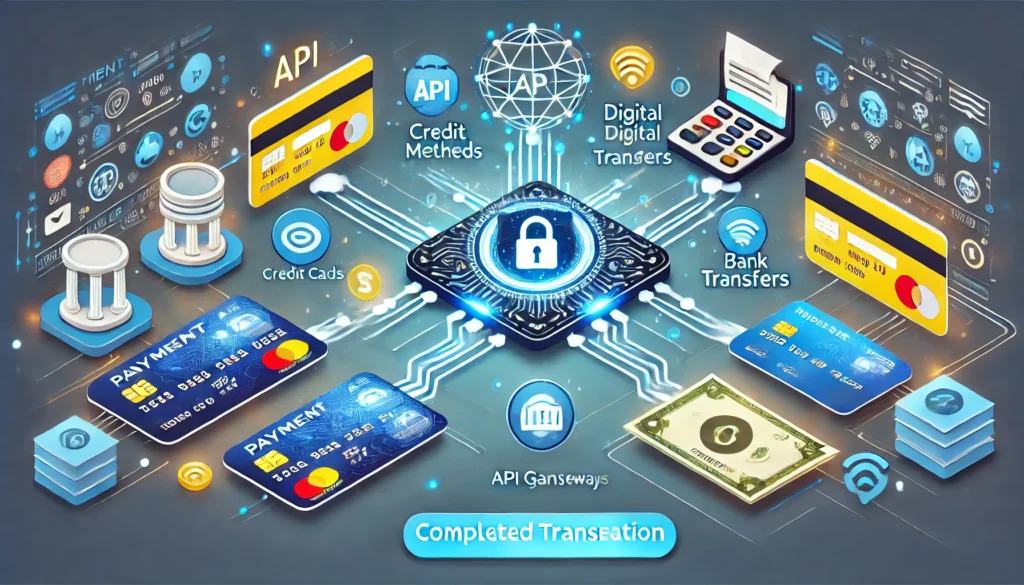The world of web development continues to evolve at a remarkable pace, and Next.js has consistently led the charge by providing developers with a high-performance framework that balances flexibility, stability, and innovation. Now, Next.js 15.2 steps forward as the latest iteration designed to reshape the landscape of server-rendered React applications. This release brings more than just incremental improvements; it refines the fundamentals of React-based development, introducing new paradigms for speed, reducing friction in the build process, and making it easier than ever to create dynamic user interfaces with minimal overhead.
At the heart of Next.js is a commitment to enhancing the developer experience. Over the years, this commitment has resulted in features like automatic code splitting, streamlined server-side rendering, and intuitive file-based routing. With Next.js 15.2, those core features are taken to the next level, solidifying the framework’s reputation as a go-to solution for large-scale and small-scale projects alike.
In the early days of React, building a server-rendered application involved significant manual configuration, complex tooling, and an array of performance pitfalls. Next.js helped solve many of these issues by introducing default configurations that empower teams to focus on writing application logic rather than wrestling with labyrinthine webpack settings. Throughout multiple versions, from its initial release to this current 15.2, the framework has steadily grown more robust. Each new release has been guided by real-world usage patterns, community feedback, and the evolving ecosystem around JavaScript and React.
Next.js 15.2 also arrives at an interesting moment in web development history. More than ever, businesses and developers emphasize speed and user experience. Modern web apps must seamlessly integrate dynamic content, sophisticated interactivity, and SEO considerations without slowing down page loads. The performance leaps in this version of Next.js answer that call, tying directly into vital improvements in caching strategies, server-side generation, and data fetching. These enhancements reflect not only immediate goals but also an overall vision of where modern front-end development is headed.
Even with these technical leaps, developer productivity remains a central focus. Next.js 15.2 streamlines tasks that can often become cumbersome. Whether you’re migrating from an older version or starting a brand-new project, you’ll notice the subtle yet significant changes in error handling, local development workflows, and how you integrate third-party APIs. The journey to a stable, maintainable, and high-performance web application becomes simpler with every new feature. This balancing act between innovation and reliability is the backbone of Next.js, and 15.2 exemplifies that philosophy.
As the demand for advanced web solutions grows, partnering with the right team to build and optimize your Next.js project becomes critical. In this post, we’ll explore the new features that make Next.js 15.2 stand out. We’ll see how they align with real-world implementation scenarios, and we’ll highlight how Vadimages, a leading web development studio, can help you harness the full power of Next.js 15.2 to meet your project goals.

By examining the intricacies of Next.js 15.2, you’ll gain insight into how its refined features can serve your needs. From dynamic routing improvements to advanced server components, the focus is on delivering faster, smarter, and more stable applications that satisfy both end-users and development teams. Let’s delve into what makes this version special, how it addresses the challenges developers face, and why it continues to hold its place as a premier solution for building robust applications with React at the core.
Innovations in Next.js 15.2
One of the standout features in Next.js 15.2 is the refinement of its server components system. This approach to rendering has been evolving steadily, giving developers the ability to mix server-side logic seamlessly with client-side interactivity. Server components in Next.js reduce the complexity and overhead often found in data fetching, hydration, and state management, allowing applications to start faster and remain responsive under heavy user interaction. Version 15.2 fine-tunes this mechanism by introducing improved error handling and clearer patterns for dealing with asynchronous data. This leads to smoother integration of external services, more robust code, and, most importantly, a better user experience.
The enhancement of dynamic routing capabilities is another significant milestone in 15.2. Next.js has long been praised for its file-based routing, which cuts down on tedious setup and keeps the directory structure intuitive. Now, you can leverage an even more flexible routing approach that supports nested layouts, dynamic segments, and advanced rewrites in a more integrated manner. The new features reduce the complexity of setting up multi-level pages, enabling you to create large, content-rich sites without sacrificing clarity. This is particularly beneficial for e-commerce platforms, online marketplaces, and large content-driven websites where sophisticated routing is crucial to user navigation.
Under the hood, Next.js 15.2 addresses performance at multiple levels. The framework’s build times have been trimmed thanks to an upgraded bundling approach that efficiently splits vendor code from your main application. Developers will notice shorter re-compile intervals during local development, resulting in a more rapid feedback loop. Once deployed, end-users benefit from faster Time to First Byte (TTFB) and optimized caching strategies that reduce the need to fetch large chunks of code unnecessarily. These optimizations might not always be visible on the surface, but they provide the backbone for a snappier, more fluid user experience.
Another area of focus in Next.js 15.2 is image optimization and serving. Modern web applications rely heavily on images, from product showcases to high-resolution backgrounds. Handling these efficiently is paramount, as images often constitute the largest part of a page’s payload. The updated image optimization algorithm refines how images are resized, compressed, and cached, aligning with best practices to ensure minimal load times. This mechanism works seamlessly, making it easier than ever for developers to provide responsive images that look great on any device without extensive manual configuration. By offloading the complexities of image processing to the framework, you can dedicate more attention to crafting user-centric features.
Equally essential is the evolution of Next.js’s built-in data-fetching methods. The getServerSideProps and getStaticProps functions remain pillars of how Next.js manages data, but 15.2 extends their capabilities with improved caching layers and better concurrency management. This is especially important for applications that require continuous data updates or rely on external APIs. The combination of refined server components and stronger data fetching means that real-time or near-real-time apps can be constructed with fewer bottlenecks, fewer race conditions, and more predictable performance.
Lastly, Next.js 15.2 steps up the game in terms of developer tooling. The integrated development server now includes more detailed logs for potential errors, making it quicker to pinpoint the root cause of issues. You’ll find improved debugging and stack traces, helpful warnings for deprecated APIs, and more robust documentation that ensures a smoother onboarding for newcomers and a frictionless upgrade path for existing projects.

These innovations come together to form a cohesive framework that stands firmly on the cutting edge of React development. Whether you’re planning to build a single-page app with minimal overhead or a sprawling e-commerce empire that demands resilience and speed, Next.js 15.2 provides the tools, configurations, and performance optimizations to make it happen.
Real-World Implementation

The practical impact of Next.js 15.2 emerges clearly when you bring it into real-world production scenarios. Teams that rely on rapid iteration and continuous deployment will appreciate the shortened build times. Being able to push small, frequent updates keeps large-scale projects flexible and ensures that new features or bug fixes reach users faster. This is essential for businesses that must react quickly to changing market conditions or user feedback.
Consider an online marketplace that showcases thousands of products with high-resolution images, real-time stock updates, and user-generated content. Implementing Next.js 15.2’s refined image optimization pipeline drastically cuts down on page load times, leading to a smoother shopping experience. When visitors don’t have to wait for images to load or for content to appear, they are more likely to stay and engage. Improved dynamic routing ensures that each product page is served quickly and efficiently, even if the site has a deep category structure. Backend services that feed this marketplace with product data or handle user authentication can integrate with Next.js’s server components to simplify the codebase, making it easier for developers to maintain.
For companies that thrive on content, such as media publishers or news outlets, Next.js 15.2 addresses some of the most pressing concerns around SEO and performance. Search engines increasingly reward fast, mobile-friendly pages, and the features in this release naturally align with Google’s performance benchmarks. The server-side rendering model ensures that critical content is quickly visible to both crawlers and users. Meanwhile, the advanced caching strategies reduce the need to refetch or regenerate pages, enhancing overall site performance and reliability. Writers and editors can publish new articles without worrying about complex deployment pipelines or slow indexing times.
In high-traffic environments, application stability and resiliency become paramount. Next.js 15.2’s concurrency improvements in data fetching enable smoother scaling, ensuring that your application can handle spikes in user traffic without bottlenecks or crashes. This is particularly relevant for online events, e-learning platforms, or streaming services, where sudden increases in concurrent users can catch less-optimized setups off guard. The robust error-handling enhancements help developers isolate problems faster, reducing downtime and preserving user trust.
Upgrading to 15.2 from previous versions also tends to be less disruptive than major version jumps. The Next.js team pays close attention to backward compatibility and release notes, providing guides and helpful warnings for any changes that could potentially break older code. This means that even if you have a large, existing codebase, you can often start adopting some of the new features incrementally. Over time, your application will gain the performance and stability boosts that define 15.2, all without a complete overhaul.
Whether the goal is to create a sleek marketing page, a data-heavy dashboard, or an interactive social platform, Next.js 15.2 offers a stronger foundation than ever before. Its blend of fast rendering, straightforward deployment, and developer-friendly tooling meets the needs of startups, agencies, and enterprises in search of a solution that can adapt to a variety of use cases. More than just a set of shiny new features, this release represents the continued evolution of Next.js, guided by a community that embraces modern web standards and best practices.
The success stories from developers who have adopted 15.2 are already circulating. Reports show measurable gains in site speed, user engagement, and developer satisfaction. By focusing on streamlined workflows, Next.js continues to make high-quality performance the default rather than an afterthought. In an industry where the demands keep growing, having a framework that scales with you—both technically and organizationally—can spell the difference between a good product and a great one.
Partner with Vadimages for Your Next Web Project

In a rapidly changing industry, it’s crucial to work with professionals who understand both the technology and the business implications behind every decision. Vadimages, a premier web development studio, stands ready to leverage Next.js 15.2 to craft digital experiences that are lightning-fast, visually stunning, and optimized for growth. Our team specializes in modern web technologies, ensuring that each project not only embraces cutting-edge frameworks but also stays focused on delivering tangible results.
When you choose Vadimages, you gain more than a technical vendor. We become your partner in every phase of development—from initial design to final deployment, and from iterative updates to performance monitoring. We believe that the ultimate success of any application lies in the harmony between user experience, technical innovation, and robust infrastructure. By building on top of Next.js 15.2, we’re able to deliver websites and apps that load quickly, scale effectively, and adapt to new challenges or opportunities with ease.
Our approach to adopting Next.js 15.2 starts with a deep understanding of your unique requirements. Whether you need a content-heavy platform that seamlessly integrates with third-party data sources or a minimalist single-page application for a niche audience, we tailor our methodology to your vision. We help you take advantage of Next.js’s improved server components, dynamic routing, and image optimization so your users immediately benefit from responsive design and swift load times. In the competitive world of online engagement, every millisecond counts, and we strive to make them count in your favor.
Vadimages also understands the importance of aesthetics and brand identity. Our design team collaborates closely with our developers to ensure that your website or web application not only performs exceptionally but also resonates with your audience. We treat every visual element and user interaction as an opportunity to enhance your brand’s message, ensuring consistency across devices and platforms. The integrated image optimization features in Next.js 15.2 allow us to include high-resolution images and compelling graphic elements without sacrificing speed.
But our services don’t end the moment your project goes live. We offer ongoing maintenance, performance audits, and iterative improvements to keep your site or app in top condition. As Next.js continues to release future updates beyond 15.2, we’ll be there to guide you through version upgrades so that you can continually benefit from the latest performance enhancements and features. Our clients appreciate this commitment to long-term success, as it helps them maintain a competitive edge in an ever-evolving digital landscape.
At Vadimages, we also take pride in transparent communication. Throughout the planning, development, and deployment processes, we keep you informed of progress, potential challenges, and new opportunities. Our team values collaboration and believes that the best results come from a shared vision. This philosophy has helped us build lasting relationships with a wide range of clients, from independent entrepreneurs to established enterprises. By choosing Vadimages, you’re selecting a team that not only understands Next.js 15.2 but also knows how to apply it effectively to advance your mission and grow your digital presence.
If you’re ready to experience what Next.js 15.2 can do for your project, we invite you to contact us at Vadimages. Our expertise in web development, combined with the powerful capabilities of this new release, can help you stand out in a crowded marketplace. Whether you aim to increase conversions, publish content at scale, or build an interactive application, our studio is equipped with the knowledge and passion to make it happen. Let’s turn your vision into a high-performance reality.















































